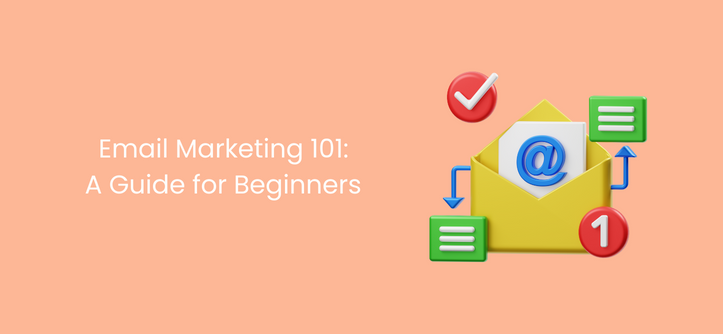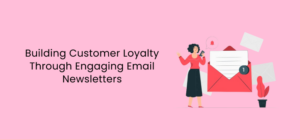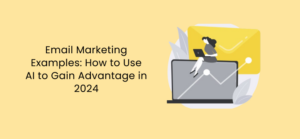Email marketing is a valuable strategy that benefits businesses and individuals alike. It allows you to connect with your audience and share valuable content directly. If you’re new to email marketing, don’t fret. This guide will take you through the basics, step by step. By the end, you’ll have the knowledge and tools to start your email marketing journey confidently. Whether you’re a budding entrepreneur, a passionate blogger, or just curious about this marketing strategy, you’re in the right place. Let’s get started.
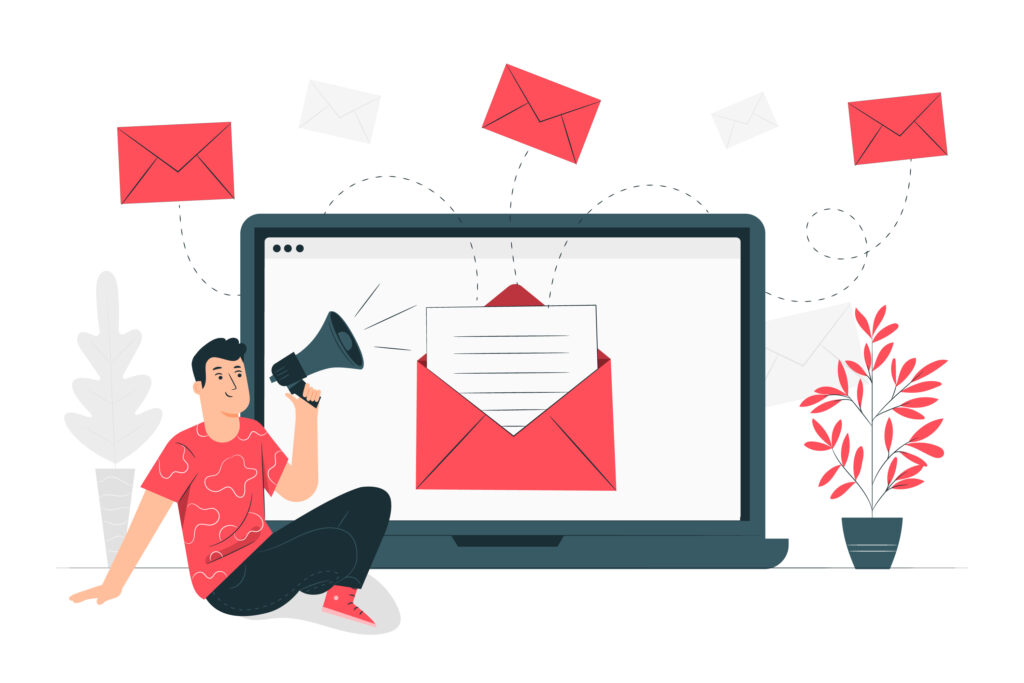
Step 1: Build Your Email List
To get started, you first need a list of people who genuinely want to receive your emails. Here’s what to do:
1. Define Your Target Audience
Begin by identifying your ideal recipients. According to this article, a target audience is a group of people who are the focus of a company’s products, services, or marketing initiatives. They are frequently identified by age, gender, income, interests, difficulties, and goals. Define your target audience by considering the following:
- Demographics: Start by considering the basics like age, gender, location, and profession. These factors can influence preferences and behaviours.
- Interests: Dive deeper into what your audience is passionate about. What are their hobbies, favourite pastimes, or areas of interest? Understanding their interests helps you align your content with their passions.
- Pain Points: What difficulties or issues does your audience have that your offerings can help with? Identifying pain points enables you to address their needs directly.
- Preferred Communication: Some prefer short and snappy emails, while others appreciate in-depth content. Understanding your audience’s preferred communication style ensures your messages resonate with them.
2. Choose an Email Marketing Platform
Selecting the right email marketing platform is a pivotal decision in your journey to build and nurture an email list effectively. Examples include Mailchimp, AWeber, ConvertKit, etc.
Things to Think About When Picking an Email Marketing Service
- Ease of Use: The right platform should be user-friendly and offer an intuitive interface that simplifies tasks like designing emails, managing lists, and tracking performance. It should enable you to focus on creating content and connecting with your audience rather than grappling with technical complexities.
- List Management: It would help if you could segment your audience, automate responses, and handle unsubscribes efficiently. The platform you choose should enable you do these easily.
- Analytics: Data is the lifeblood of your email marketing strategy. The platform should provide comprehensive analytics, including open rates, click-through rates, conversion rates, and more. This data allows you to gauge the effectiveness of your campaigns and make data-driven decisions.
- Integration: Think about how easily the platform works with your current tools and systems. It should play nicely with your website, e-commerce platform, and other marketing tools to streamline your efforts.
- Pricing: Your budget matters. Email marketing platforms come with various pricing structures, often based on the number of subscribers or emails sent. It’s vital to choose a platform that aligns with your budget.
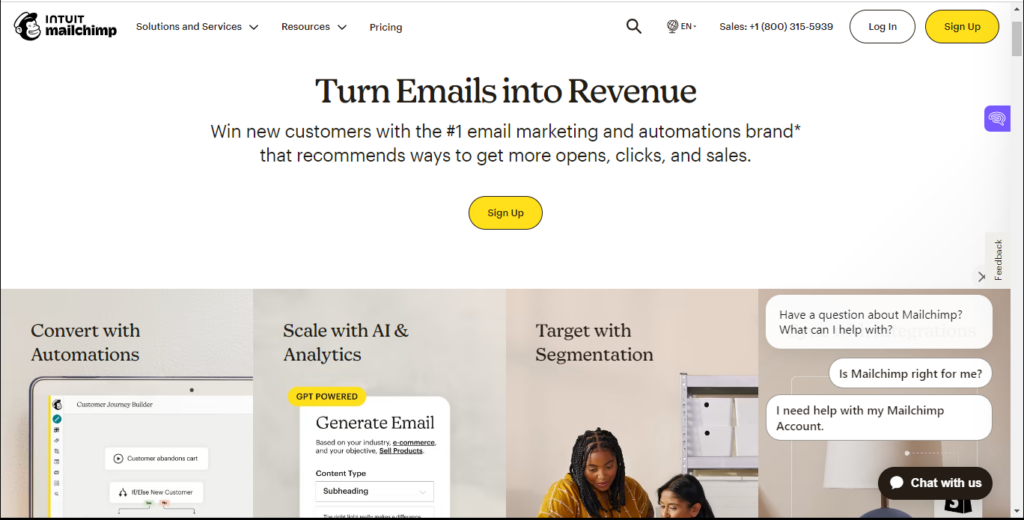
3. Create Your Pop up Form
Now that you’ve picked your preferred email marketing platform, the next step is to create a nice pop up form that makes people want to join your list. With a handy tool like Poptin, you can easily make forms that match your style and convince more people to join your email list.
Things To Note When Creating Your Pop up Form
- Simplicity is Key: Keep the design clean and clutter-free. Use a simple colour scheme that complements your brand’s aesthetic.
- Eye-Catching Headline: Write a compelling headline that clearly conveys the value of subscribing. Use attention-grabbing fonts and colours to make it stand out.
- Engaging Imagery: Use relevant images or graphics that align with your brand. A well-chosen image can evoke emotions and enhance the form’s visual appeal.
- Clear Call-to-Action (CTA): Your CTA button should be prominently displayed and use action-oriented language like “Subscribe Now” or “Get Started.”
- Minimal Fields: Ask for only essential information. In most cases, a name and email address are sufficient. Lengthy forms can deter potential subscribers.
- Mobile Responsiveness: Ensure that your form is mobile-friendly. Many visitors access websites from smartphones, so the form should look and function well on smaller screens.
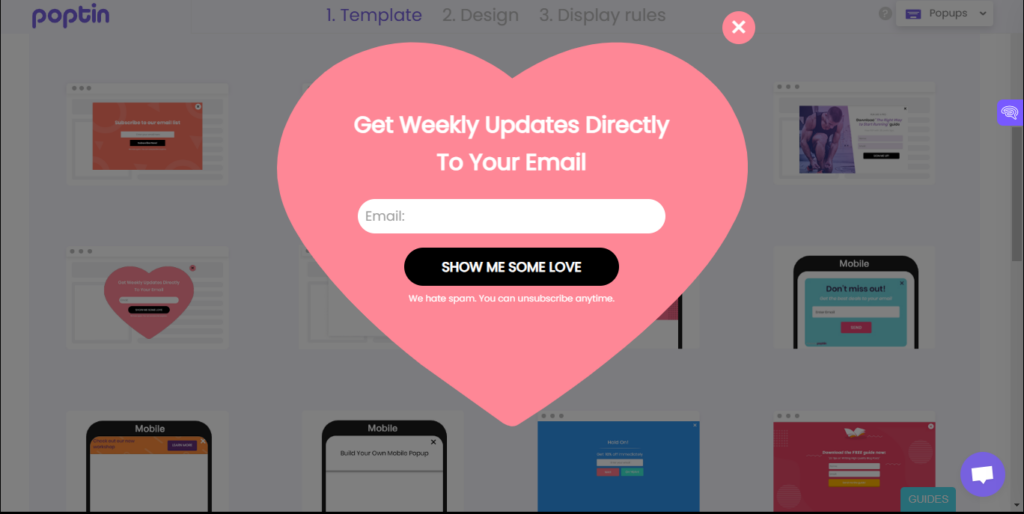
4. Offer Lead Magnets
A lead magnet represents something of significant value to your intended audience, which you provide in exchange for their contact details. Examples of effective lead magnets are:
- Ebooks
- Guides
- Reports
- Checklists
- Resource kits etc.
5: Promote your Lead Magnets
Share your lead magnets on social media, within blog articles, and even in your email signature. Utilize exit-intent pop-ups to capture visitors who are about to leave your website.
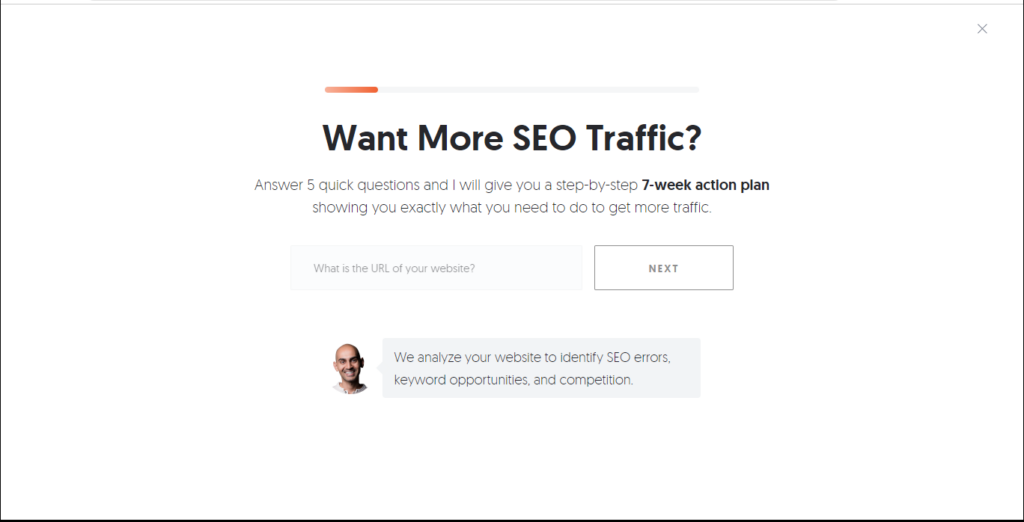
Step 2: Write Engaging Emails
Now that you have a growing list of subscribers, it’s time to create emails that captivate your audience. Here’s how:
- Educate and Inform: Your content should provide value, whether it is educational blog posts, informative newsletters, or exclusive insights. Subscribers should feel they gain something by opening your emails.
- Consistency: Establish a consistent sending schedule so subscribers know when to expect your emails. Consistency builds anticipation and trust.
- Personalization: Address subscribers by their first name in emails. Tailor content based on their past interactions or preferences.
- Storytelling: Incorporate storytelling into your emails. Share anecdotes, case studies, or customer success stories. Stories resonate with readers and make your content memorable.
- Engaging Subject Lines: Write enticing subject lines that pique curiosity or offer a benefit. The subject line is the first thing subscribers see, so make it compelling.
- Clear and Concise: Keep your content concise and to the point. Use clear language, avoid jargon, and make it scannable with headings and bullet points.
- Call to Action: Every email should have a clear call to action. Whether it’s to read an article, watch a video, or make a purchase, guide your subscribers on what to do next.
Step 3: Measure and Optimize
A famous quote from Peter Drucker holds true “You can’t improve what you don’t measure”. Keeping an eye on how well your email campaigns are doing is crucial for getting better results.
Email Marketing Metrics to Monitor
- Open Rate: The percentage of recipients who open your emails. A high open rate indicates strong subject lines and content.
- Click-Through Rate (CTR): The percentage of recipients clicking links within your emails. A high CTR indicates engaging content.
- Conversion Rate: The portion of people who do something you want, like making a purchase. A high conversion rate indicates effective calls to action.
- Bounce Rate: The percentage of emails that couldn’t be delivered. High bounce rates may indicate outdated or incorrect email addresses.
- Unsubscribe Rate: The percentage of individuals who choose to stop receiving your emails. A high unsubscribe rate may indicate irrelevant content or excessive sending.
[Recommended: Top Four Email Marketing Tools To Track ROI]

Optimizing Your Email Marketing
- Segmentation: Use the insights from your analytics to segment your email list further and send even more personalized content.
- A/B Testing: Experiment with different subject line, and send times to see what resonates best with your audience.
- Automated Responses: Set up automated responses based on user behaviour, such as abandoned cart emails or post-purchase follow-ups.
- List Hygiene: Regularly clean your email list to remove inactive or bounced addresses, improving deliverability.
- Continuous Learning: Stay updated with email marketing trends and technologies to adapt and optimize your strategy over time.
Common Mistakes to Avoid in Email Marketing
When building an email list, it’s advisable to avoid some mistakes that can hinder your efforts. Examples of such mistakes include:
- Purchasing Email Lists: Never buy email lists. These lists often contain outdated or irrelevant contacts, resulting in high bounce rates and damaging your sender’s reputation.
- Neglecting Permission: Always obtain explicit consent from individuals before adding them to your list. This ensures that subscribers genuinely want to hear from you.
- Ignoring Unsubscribers: Respect unsubscribe requests promptly. Failing to do so violates regulations and can harm your sender’s reputation.
- Neglecting Segmentation: Not segmenting your email list leads to sending irrelevant content to subscribers. Segmentation ensures that recipients receive emails tailored to their interests.
- Inconsistent Sending: Maintain a consistent email-sending schedule. Irregular emails can confuse subscribers and result in decreased engagement.
- Lack of Mobile Optimization: Neglecting mobile optimization can lead to poor user experiences for mobile users, who comprise a significant portion of email recipients.
- Spammy Subject Lines: Avoid clickbait or misleading subject lines that can damage your credibility and lead to high unsubscribe rates.
- Neglecting security tools: Password managers, firewalls, and intrusion detection systems risks compromising sensitive subscriber information. Failing to use them may lead to breaches, eroding trust, and inviting legal consequences.
Conclusion
Building an email list is an exciting journey that requires careful planning. It’s not just about collecting email addresses; it’s about nurturing a community of engaged subscribers who genuinely value your content. By following the steps outlined in this article, you’ll be well on your way to creating a thriving email list that can significantly benefit you or your business.
Also, remember that building a thriving email list is ongoing and requires patience, staying consistent, and continuously adapting your strategy based on data and feedback. With dedication and the right tools, you can create a successful email list that drives conversions and fosters meaningful connections with your audience.
